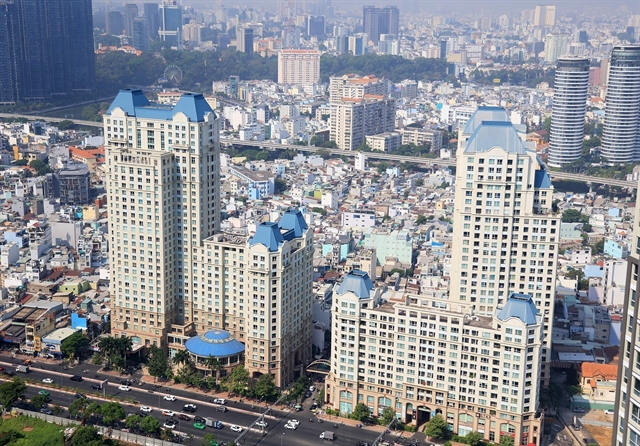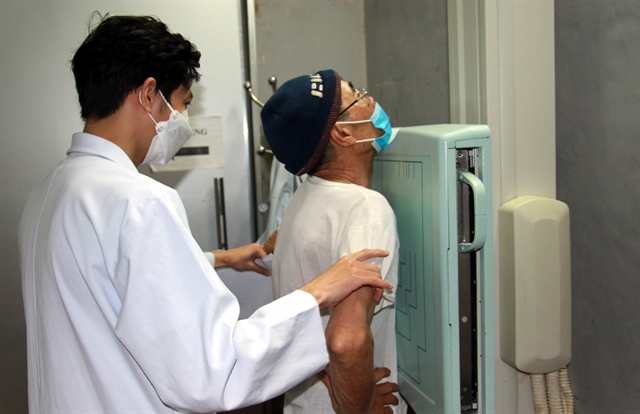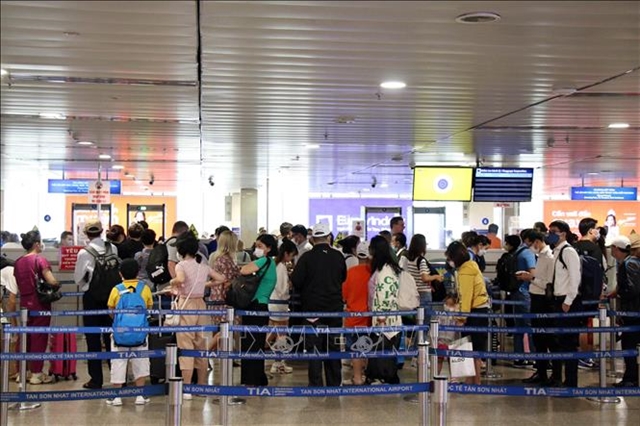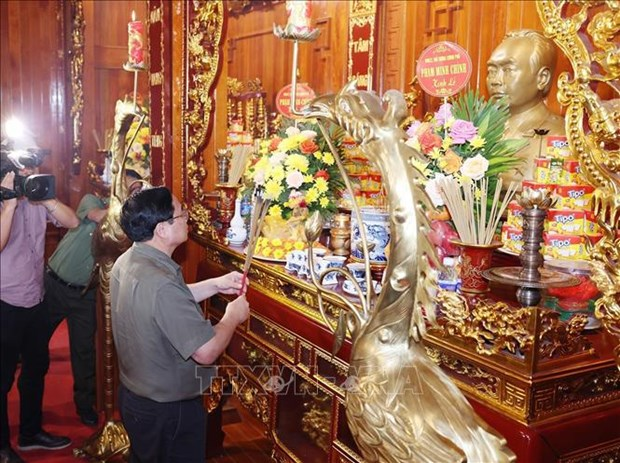 Society
Society

A “terrible waste” of resources is taking place as a grand plan to shift Government offices, schools and hospitals to suburban enclaves in the capital city fails to materialise, almost three years on.
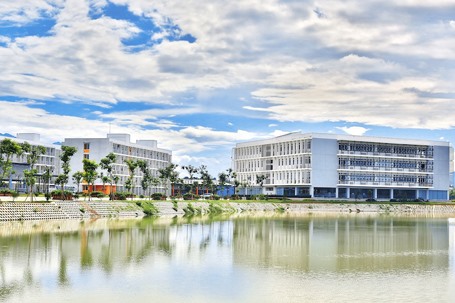 |
| A view of FPT University in Hoà Lạc University Town in the western district of Thạch Thất. — Photo dantri.com.vn |
HÀ NỘI – A “terrible waste” of resources is taking place as a grand plan to shift Government offices, schools and hospitals to suburban enclaves in the capital city fails to materialise, almost three years on.
Under an official decision issued in 2015 to reduce pressure on Hà Nội’s public infrastructure, Government agencies, public schools, hospitals and manufacturing facilities would be moved to the suburbs.
With the plan struggling to get off the paper, population density and traffic congestion in the city has worsened, local reports say.
With 96 universities and colleges, Hà Nội hosts about 40 per cent of Vietnamese tertiary students. The Hoà Lạc University Town in the western district of Thạch Thất was expected to become the common home of institutes under the Việt Nam National University, Hà Nội (VNU).
The VNĐ7.2 trillion (US$317 million plus) project was planned to be completed in 2015. However, very little implementation has happened.
The Dục Tú – Mai Lâm University Cluster Area in Đông Anh District, approved in 2014, has been postponed due to financial issues.
The Hà Nội College of Pedagody and Hà Nội Community College in Cầu Giấy District, which should have moved to the above-mentioned area, are now asking for funds from the city to reconstruct their present facilities.
The Chúc Sơn University Cluster Area in Chương Mĩ District is facing a similar problem because a lot of colleges are reluctant to move there.
Some universities have been active in their compliance with the government’s decision even before it was issued.
Nguyễn Đức Tĩnh, deputy director of the Trade Union University in Đống Đa District, said they have been allowed to build another campus in Hưng Yên Province’s Yên Mỹ District.
The project has been implemented for six years with investment allocated from the State budget and other resources. In 2018, when its first phase will complete, there will be a bus connecting the two campuses.
“By then, we will only run advanced training courses for Trade Union’s officers at the old campus,” Tĩnh said.
Phạm Đức Vinh, director of the Hà Nội Industrial Vocational College in Đống Đa District, said he highly appreciated the decision to move universities and colleges to the suburbs.
He said his institution’s present 20,000sq.m facility was too small to meet the requirements of a modern environment to study in. However, the college has asked that it maintains a part of its old campus as the admissions office.
Should hospitals move?
Although the city has invested in constructing new facilities, several hospitals have been reluctant to move outside the urban area.
The National Cancer Hospital (K Hospital) and National Hospital of Endocrinology (NHE) are operating in Thanh Trì District, but they have not still handed over their old buildings to the city.
To address overcrowding in centrally-administered hospitals including Việt-Đức and Bạch Mai, the government has invested in building new branches in Hà Nam Province.
Other hospitals like the Central Eye Hospital or the National Hospital of Obstetrics and Gynecology have had plans to construct new facilities, have are yet to make a detailed proposal.
According to the Government plan, medical facilities are to be set up in the suburban districts of Long Biên, Hoà Lạc, Sóc Sơn, Phú Xuyên and Sơn Tây. But nothing has happened in this regard yet.
Trần Ngọc Lương, director of NHE, said that it was the first public hospital to apply for a bank loan of VNĐ500 billion (US$22 million) to build its second branch in Thanh Trì District’s Tứ Hiệp Commnue.
While two-thirds of inpatients are now receiving modern care and treatment in the new facility, others still stay at the old hospital due to its favourable location.
In April, 2014, the K Hospital launched three branches on Quán Sứ, Tam Hiệp and Tân Triều streets. In the near future, it is expected that the hospital on Quán Sứ Street becomes the National Cancer Research Institution under the K Hosptial.
However, several city officials are questioning the policy to move hospitals.
Nguyễn Đức Chung, Chairman of the Hà Nội People’s Committee, said he was worried about the impact of moving on public healthcare quality.
“A hospital has to be located within 15 minutes reach of a residential area. Moreover, there has to be one hospital for every 25,000 to 30,000 citizens. Therefore, the city is reconsidering some plans to make sure that both people and medical facilities can benefit,” he said.
Trần Bình Giang, director of the Việt – Đức Hosptial, stressed the significance of hospital expansion.
“We will continue operating the old hospital even after the new branch in Hà Nam Province opens. The hospital will also find ways to distribute patients to reduce pressure on surroundings,” he said.
Nguyễn Đình Hưng, director of the Saint Paul Hospital, said urban hospitals were necessary to guarantee residents’ healthcare. He said special medical facilities like mental hospitals and rehabilitation centres should be located in the suburbs with larger areas.
Despite investing in spacious headquarters in the suburbs, several ministries have not yet handed over their old offices to the government, delaying planned infrastructure upgrades.
In 2013 and 2016, the Hà Nội People’s Committee decided to save 55ha in a new urban area south of the Thăng Long Avenue and 20ha in the Starlake urban area, west of the West Lake for 13 ministries including Ministry of Planning and Investment, Ministry of Agriculture and Rural Development and Ministry of Industry and Trade to build their offices.
Some of these ministries have already transferred to the new areas, but their old headquarters have not been returned to the city.
The Ministry of Natural Resources and Environment, for example, is using its old headquarters on Nguyễn Chí Thanh Street as the office of its Administration of Seas and Islands. Meanwhile, the erstwhile HQ of the Home Affairs Ministry is now its Officers Training School.
Representatives of the two ministries told the Kinh tế và Đô Thị (Economy and Urban) newspaper that they did not know what the city planned to do with their old headquarters.
Nguyễn Tân Chính, head of the Public Assets Management Administration, said that it would tighten management of public constructions in 2018, including withdrawing and rearranging old offices for different purposes.
Phạm Hồng Hà, Construction minister, said that the ministry then was considering all potential plans to meet requirements of governmental agencies and make budget allocations.
“We encourge ministries to source investment from diverse sources to construct their new headquarters,” he said.
The VNĐ17 trillion ($750 million) budget proposed by the Finance Ministry for moving 13 ministries’ headquarters to the suburbs can be raised when bids on their old office buildings are conducted transparently and effectively, the Kinh tế và Đô Thị reported. – VNS





